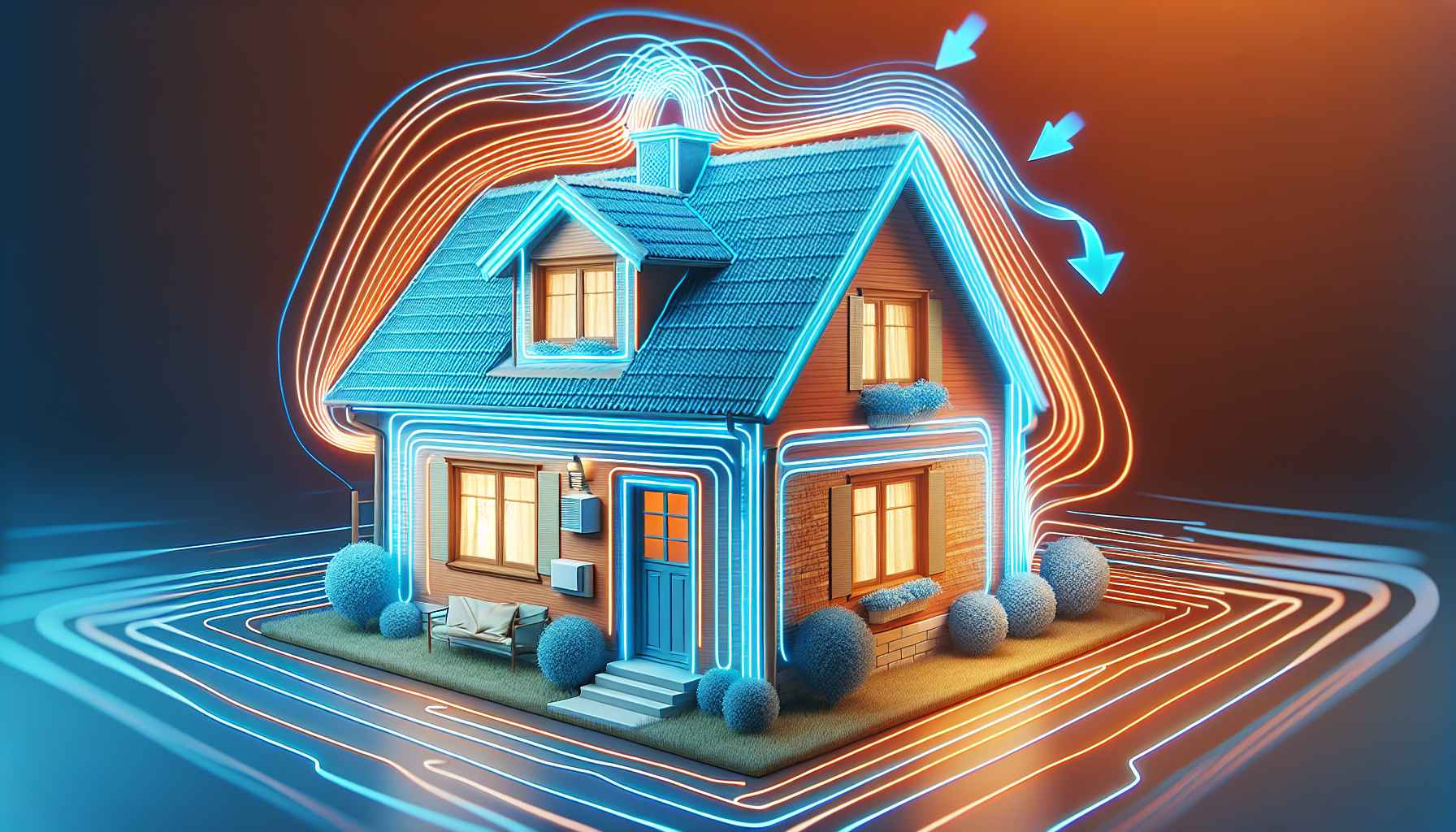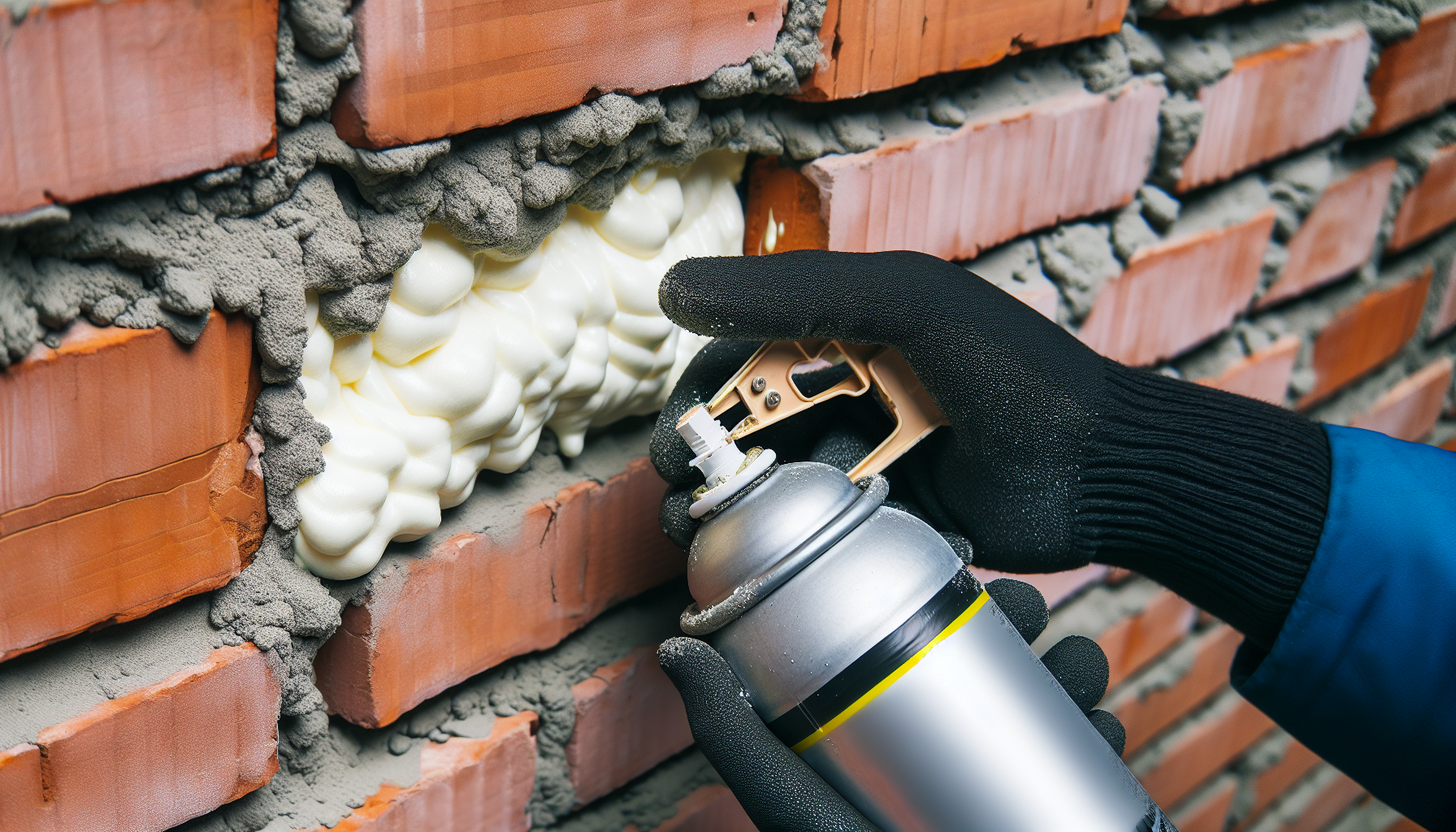Are air leaks raising your energy bills? A blown door test, also known as a blower door test, is your first step to a more efficient home. Learn how to conduct this simple test, understand the results, and take action to reduce your energy costs. Get ready to transform your home into an airtight, energy-saving haven.
Key Takeaways
- Blower door tests are critical for assessing a home’s airtightness and identifying air leaks, which is key to improving energy efficiency and reducing heating and cooling costs.
- Professional execution of the blower door test includes meticulous setup preparation, controlling the house’s air pressure to detect leaks, and interpreting results to measure airtightness against building standards.
- Post-test air sealing to address identified leaks, ensuring proper ventilation in airtight homes, and considering the best timing for tests are essential for maintaining indoor air quality and complying with energy conservation codes.
Understanding the Basics of a Blower Door Test

A blower door test is more than just a tool—it’s a roadmap to enhancing your home’s energy efficiency. This test gauges the airtightness of your home, offering practical solutions to enhance your home’s energy efficiency, ranging from sealing air leaks to enhancing insulation.
You may be wondering what goes into a blower door test. Let’s break it down.
The Purpose of Blower Door Testing
Picture a blower door test as a detective, hunting down the culprits of heat loss—air leaks. The blower door test quantifies heat loss and pinpoints leak locations, yielding a precise measure of your home’s airtightness, a key factor in its energy efficiency.
This test measures the Air Changes per Hour (ACH) under pressure, a vital metric in understanding your home’s airtightness. The results? Better indoor air quality, more efficient energy use, and potential energy savings.
Key Components of the Blower Door
Like a finely tuned instrument, a blower door comes with three key components: a calibrated fan, a digital pressure gauge, and air seals. Imagine the blower door as a window to your home’s energy efficiency. The fan, mounted into an exterior door frame, controls the induction or removal of air from the building, while the pressure gauge measures the difference in air pressure inside versus outside your home, contributing to the calculation of your home’s airtightness.
Together, these components work in harmony to detect the sneaky air leaks that could be draining your energy efficiency and hiking up your energy bills.
The Procedure of Conducting a Blower Door Test
With the ‘what’ and ‘why’ of a blower door test clarified, we can now focus on the ‘how’. Conducting a blower door test comprises three main steps: test setup, execution, and results interpretation. This may sound complex, but don’t worry—hiring a professional for a blower door test ensures accuracy and provides actionable insights with reliable results.
Let’s take a closer look at each step.
Setting Up the Test
Setting up a blower door test requires meticulous preparation. Here are the steps involved:
- Close and latch all windows.
- Weather-strip all doors.
- Insulate attic hatches.
- Assemble and size the blower door’s frame to the door opening.
- Attach the fabric panel to the frame.
- Insert the fan with flow rings.
It’s like setting up a stage for a performance, with the blower door playing the lead role.
Once everything is set, and the heating and cooling systems are turned off, the technician then confirms the setup, and the show is ready to begin.
Executing the Test
The execution of the blower door test is where the magic happens. The house is depressurized, meaning that no one should enter or exit the home throughout the testing phase. This depressurization creates a pressure difference between the interior and exterior, bringing the house to a state of depressurization. Once this state is achieved, professionals calculate the air changes per hour (ACH) by considering the dimensions and volume of air in the house.
It’s like a symphony of science and technology, all working together to enhance your home’s energy efficiency.
Understanding the Results
Understanding the results of the blower door test is like deciphering a coded message. The key metrics to look for are:
- ACH50: This reveals how many times the entire volume of air inside a home, measured in cubic feet, is exchanged with outside air under test conditions. Lower ACH numbers indicate a more airtight home.
- CFM50: This measurement provides information about the volume of air leakage.
- CFM50/sq. ft.: This rate helps professionals better understand your home’s airtightness level.
All this data is then compared with established building standards to check for compliance.
The result? A detailed report with recommendations for each test, whether the results are compliant or not.
Identifying and Sealing Air Leaks Post-Test

So, you’ve conducted the air leakage testing and understood the results. What next? The next step is to identify and seal the air leaks post-test. This step is integral in reducing your home’s energy consumption by preventing moisture condensation issues Prevent Call-Backs with an Air Barrier Test and aiding in appropriate HVAC sizing.
Wondering how to detect and seal off these elusive air leaks? Let’s find out.
Locating Problem Areas
Locating problem areas in your home is like playing detective, searching for clues and evidence. Technicians use fog generators, smoke, and infrared imaging during the blower door test to visually and accurately identify the locations of air leaks. A thorough visual inspection is carried out, inspecting the exterior caulking around doors and windows, checking weather stripping, and looking for gaps around pipes and foundational seals.
These problem areas are then targeted with appropriate air-sealing techniques, including the use of an air barrier, to successfully pass a blower door test.
Techniques for Air Sealing

Sealing the air leaks is like patching up a ship to prevent it from sinking. Techniques for air sealing include using expanding spray foam for plugging holes in attic and foundation spaces, sealing rim joists in basements, and using weatherstripping and foam gaskets for sealing leaky windows and doors. Professional techniques include sealing can lights with gaskets, fire-retardant boxes for recessed lighting, and caulking around new fireplace installations.
Regular maintenance such as checking and replacing weatherstripping around entry doors, and considering the removal or sealing of pet entry doors, can ensure your home remains airtight.
Compliance with Building Codes and Standards
After the air leaks are sealed, compliance with building codes and standards, including the International Energy Conservation Code, should be verified. These codes and standards are like checkpoints on a roadmap to a more energy-efficient home.
Let’s delve into the specifics.
Meeting the Ontario Building Code
For homes in Ontario, the Building Code stipulates a requirement for air changes per hour, which is set between 2.5 and 3.5 ACH. If you’re wondering how much air buildings need to circulate, these specific airtightness targets must be met. If not, the Ontario Building Code offers trade-offs to achieve compliance through alternative energy efficiency measures.
It’s like a flexible plan, giving you different paths to reach the same goal.
Achieving High-Performance Building Certifications
For those aiming for the stars, achieving high-performance building certifications such as Passive House or Net Zero requires meeting stringent air leakage rates. These certifications not only ensure your home is energy-efficient but also contribute to a healthier environment by reducing your carbon footprint.
It’s like getting a gold star for your efforts in energy efficiency.
Cost Analysis of Blower Door Tests
Having grasped the process and advantages of a blower door test, let’s delve into the financial aspects. How much does it cost? And more importantly, is it worth it?
Professional Service vs. DIY Kits
Professional blower door tests typically range from $200 to $450, while a professional-grade blower door test kit can cost more than $3500. You could consider renting blower door test equipment for a DIY approach. However, professional services may prove to be more cost-effective than the purchase or rental costs of a DIY kit for a single use, especially considering the expertise and certification of the professional performing the test.
Long-Term Savings and Rebates
While the upfront cost of a blower door test might seem steep, the long-term savings and rebates can make it a worthwhile investment. A blower door test can lead to significant energy savings and reduce environmental impact by identifying and sealing air leaks. Once these leaks have been sealed, homeowners can experience reduced energy bills and enhanced comfort levels in their homes.
Moreover, homeowners who invest in blower door tests and undergo an energy audit can qualify for the Home Efficiency Rebate program, which covers over 90% of the test’s cost.
Enhancing Ventilation in Airtight Homes

Creating an airtight home is key to energy efficiency, but don’t underestimate the importance of boosting ventilation in such homes. Without proper ventilation, indoor air quality can suffer, leading to health issues and discomfort.
Importance of Fresh Air Systems
Fresh air systems, such as HRVs and ERVs, are essential for maintaining indoor air quality in airtight homes. These systems preheat incoming fresh air using the warmth of stale exhaust air, while ERVs additionally transfer moisture, helping to maintain comfortable indoor temperature and humidity levels.
They’re like the lungs of your home, breathing in fresh air and exhaling stale air, all the while maintaining a healthy and comfortable indoor environment with air flowing efficiently.
Integrating Ventilation with Energy Efficiency
Balancing ventilation with energy efficiency is like walking a tightrope. You want fresh air, but you don’t want to let out the conditioned air. Balanced ventilation systems, such as ERVs and HRVs, provide equal amounts of fresh outside air and polluted inside air, ensuring that homes remain neither pressurized nor depressurized.
These systems optimize energy efficiency by transferring both heat and moisture between outgoing and incoming warm air streams, aiding in better humidity control within airtight homes.
Timing and Seasonality of Blower Door Tests
Much like the timing crucial in planting or harvesting crops, the timing and seasonality of conducting blower door tests carry significant importance. Let’s delve into when and why you should conduct these tests.
Best Seasons for Testing
Just as a gardener keenly observes weather patterns and seasons, conducting a blower door test at the right time can yield fruitful results. Seasons with large temperature disparities between the interior and exterior offer improved accuracy when using infrared cameras for testing, especially when examining interior doors for potential air leaks.
It’s like having a magnifying glass that works better under the sunlight, helping you uncover those elusive air leaks more effectively.
Considerations for New Construction and Renovations
For new constructions and renovations, blower door tests should ideally be conducted after the installation of Mechanical, Electrical, and Plumbing (MEP) systems and windows, but before insulation is added. This early detection and correction of issues can prevent problems that could later be concealed.
It’s like catching a small leak in a ship before it leads to a catastrophe.
Summary
We’ve journeyed through the world of blower door tests, delving into their purpose, process, cost, and importance in enhancing energy efficiency. We’ve learned how these tests can help us identify and seal air leaks, comply with building codes, and even qualify for rebates. Most importantly, we’ve realized that while making our homes airtight is crucial, maintaining proper ventilation is equally important. It’s like striking the perfect balance between a sealed bottle and an open window, achieving energy efficiency without compromising on comfort or air quality.
Frequently Asked Questions
How hard is it to pass a blower door test?
Passing a blower door test can be challenging, with an estimated 50% of newly constructed homes failing the test due to a lack of understanding about creating a continuous air barrier system. It’s important to ensure proper preparation and knowledge to increase the chances of passing.
Is a blower door test worth it?
Yes, a blower door test is worth it for determining energy efficiency, health, and longevity of a structure, as well as uncovering and controlling air leakage. Consider having a blower door test performed when buying a house or building to assess future energy bills.
How much is a blower door test?
A blower door test typically costs approximately $300-$400 for an average sized house. You can hire a professional or choose to perform the test yourself.
What is a good score on a blower door test?
A good score on a blower door test is an ACH of 5, which indicates a semi-airtight home and is favorable for older homes. ACH readings of 6 to 9 indicate a moderately leaky home, while readings over 9 indicate a very leaky home.
What is the purpose of a blower door test?
The purpose of a blower door test is to locate air leaks in the building envelope and provide information about the holes that may be difficult to find otherwise. Professional energy assessors use this test to determine a home’s airtightness, impacting infiltration and exfiltration.
